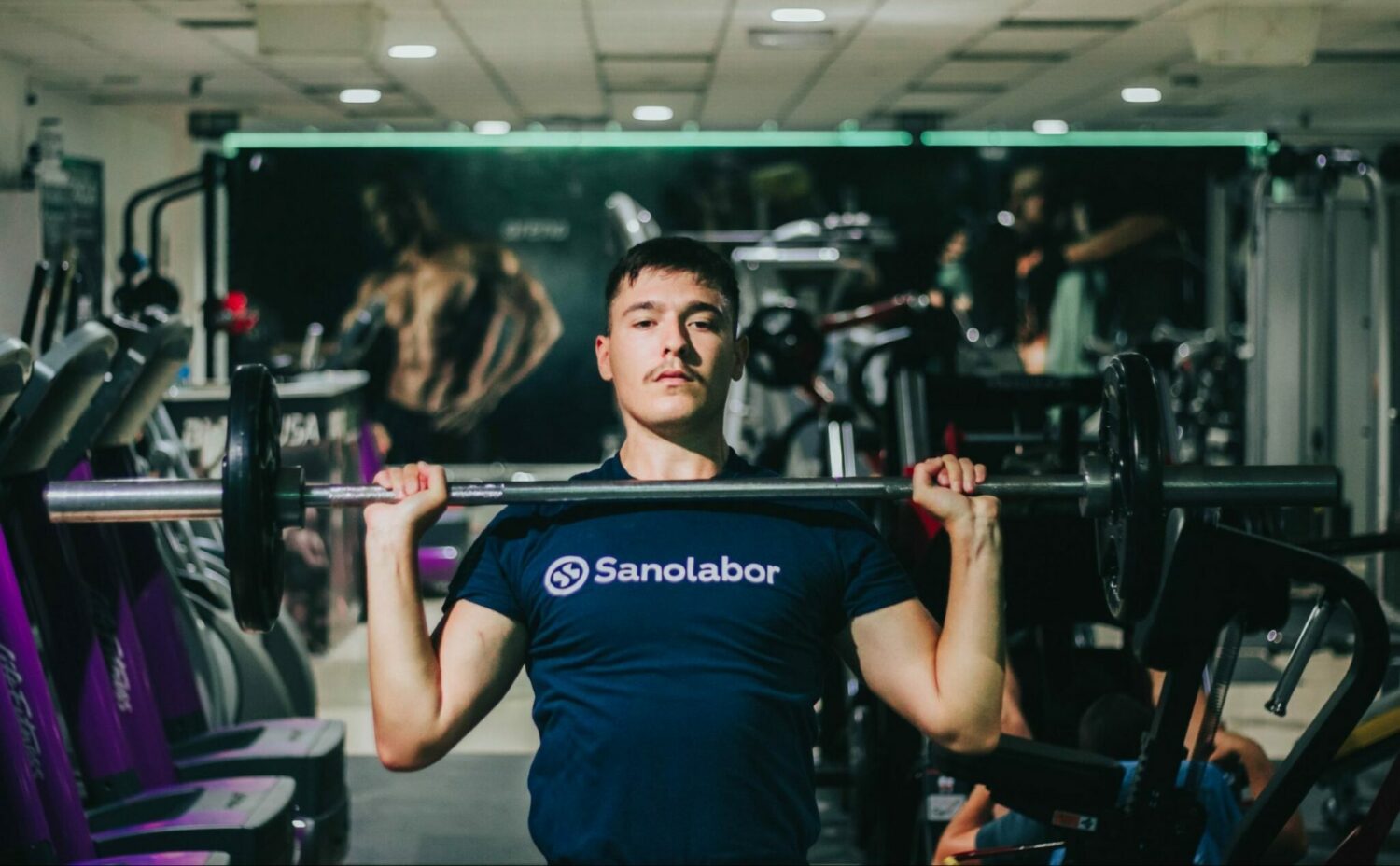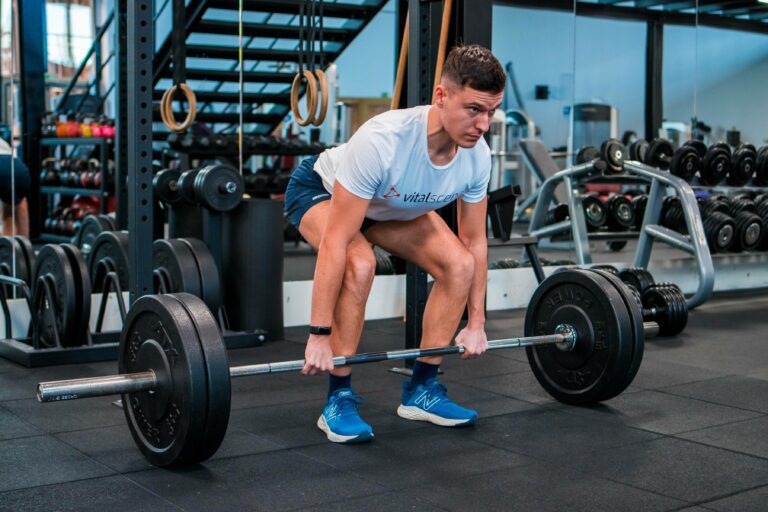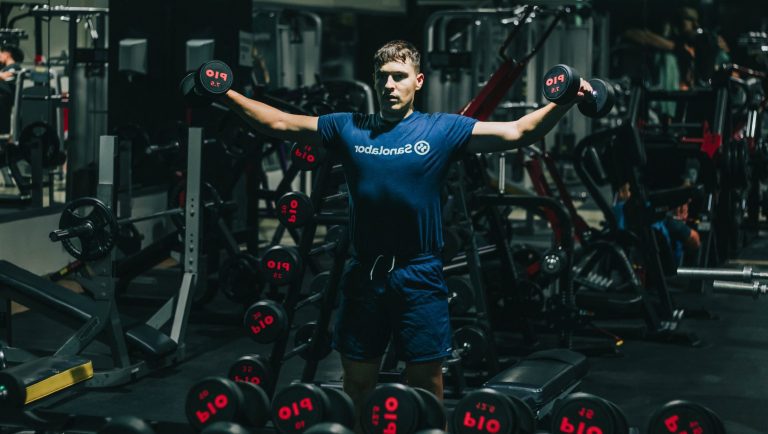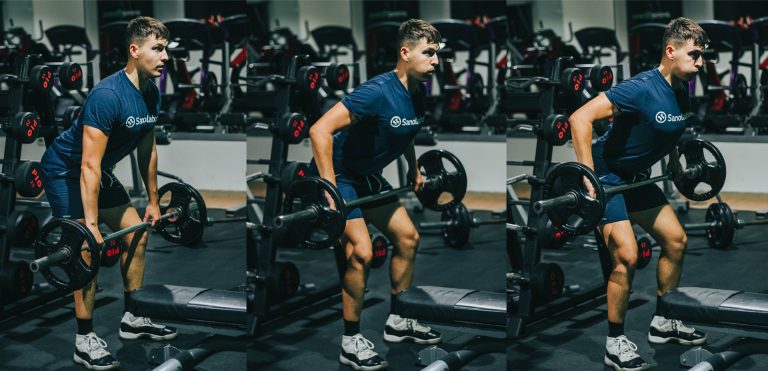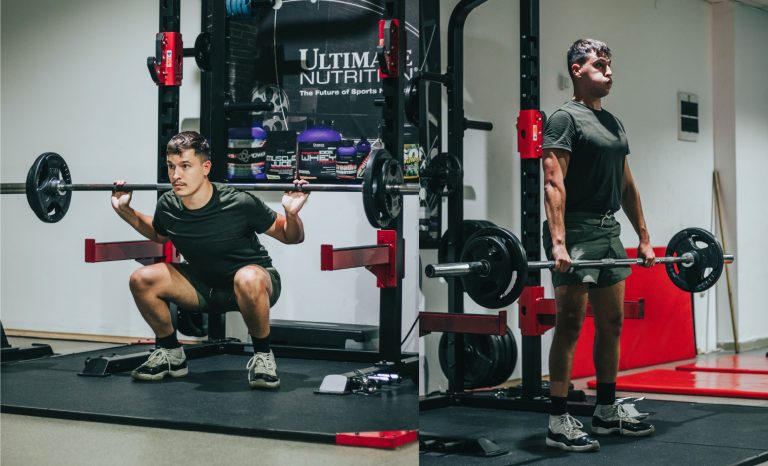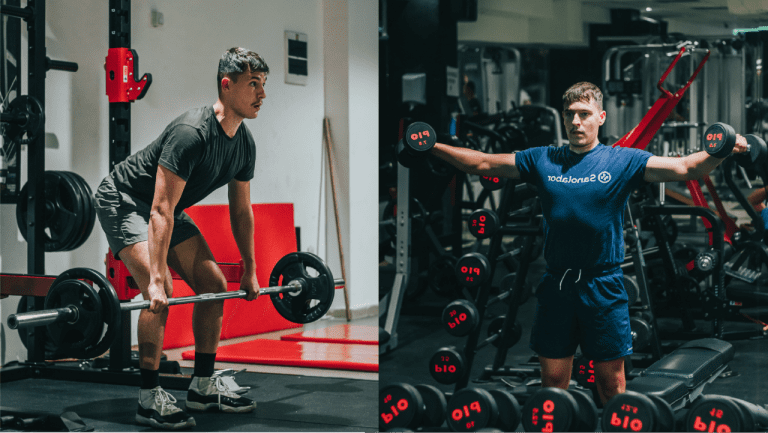How To Build Muscle | 8 Tips For Beginners
If you are motivated to embark on your fitness journey to become fitter, this article is for you. You should know how to build muscle effectively before starting your hypertrophy training. You may want to tone your body, which is done by increasing muscle mass and shredding fat off your frame. In either case, knowledge is power.
Although the complexity of hypertrophy always evolves, starting out you should always make sure you do your basic research at least. We’ll cover the basics of muscle hypertrophy, from compound vs. isolation exercise to optimal diet and protein intake. The aim is to learn how to effectively train for muscle growth. You’d get some extra tips like training metrics, enjoy!
Check Out: 4 Key Principles For Building Muscle: How To Train For Muscle Growth
Where to Start?
This section is especially for newbies and first-time lifters out there. You are probably overwhelmed by all the info on the internet. There is so much out there, that you don’t know how to start your first day. View this as a journey, you’ll learn along the way. This is why we put very little information, for a fresh start. So here are the 8 main points for amateurs.
1. Just Exercise
As a kinesiologist, I’m not a big fan of this, but I have to admit, starting is a must. Most newbies look for different programs with higher levels of complexity, new nutritional plans focused on calorie counting, a ton of expensive supplements, etc. This is overwhelming and is preventing most people from starting out in the first place.
You shouldn’t do what Arnold Schwarzenegger did in his prime, you don’t need a specialized program, nor a calorie counting machine. You just need to start, by getting a gym membership or joining your friend in his backyard gym.
The point is, the newer you are to exercise, the higher the effect exercise will have on your body. This means for amateur lifters, specific and complex programs do not need to be implemented at the start right away, just lifting lightweight with the correct form will stimulate a significant adaptation response.
- Both for younger athletes who are new to training, (1) and for beginner lifters, (2) weight training has positive effects on maximal strength.
- Resistance training can be pretty efficient for inactive individuals too, increasing metabolic rate by 7%, reducing fat, and building muscle. (3)
Another great point for beginners is to watch out for the volume. Consistency is the key to building muscle. Studies show that as total weekly training volume increases, so does the muscle growth (strength) effect take place faster, as the adaptation response to stimulus increases. (4)
Key Point
Beginners should focus on consistency, correct form, and lightweight lifting at first. Inactive people will have better effects from exercise, as the newly implemented training is shocking to the body, stimulating greater adaptation.
2. Lift For Hypertrophy (Not Strength)
The most important thing to understand is the difference between strength and hypertrophy. Beginner lifters go to the gym to become bigger and stronger. While this is possible and inter-relational, most of the time you either train for mass or strength specifically.
Hypertrophy is muscle growth. Training for hypertrophy requires higher volume and focuses on fatiguing the muscle. The point is to cause microtears or small injuries in the muscle fibers which form a physiological environment optimal for muscle growth.
This training is accompanied by higher inflammation and requires good recovery, sleep, and higher protein intake as we are building muscle. It is an anatomical change that takes place, and for that we need time.
It’s the opposite of training for maximal strength, which improves the ability of our nervous system to fire up larger motor neurons, to lift max. load. Strength requires lower frequency and lower volume and is mainly trained through compound exercises like the squat, bench press, deadlifts, and overhead press.
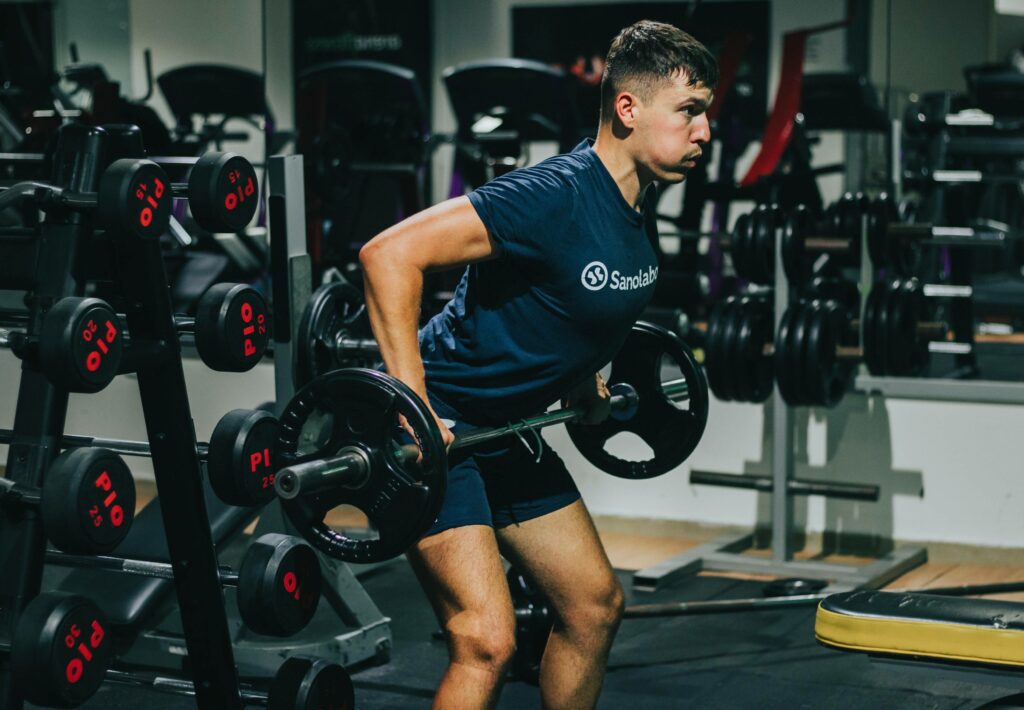
3. Lift Lightweight (Moderate) Load
In Strength training scientific research, the basics of load and volume training state that:
- Hypertrophy is maximized with moderate-load, high-volume training
- Strength is trained with high-load, lower-volume training
- Muscle endurance is improved with low-load, higher-frequency training. (5)
Training with weights should be individualized, but for amateurs understanding this continuum is crucial. First, we aim at muscle endurance, so low load and higher volume.
After our body gets used to it, we shift to hypertrophy where moderate load and high volume are the key. Then to use these muscles we can shift towards strength and power, which is characterized by low volume, low frequency, and higher load. Power can also be trained with a low load if done explosively, but that’s too much for this article.
Muscle Endurance
Hypertrophy
Strength
The lower the load, the higher the frequency, the more we train for muscle strength endurance, targeting the slow-twitch (type 1) muscles. This evokes metabolic adaptation and anatomical changes.
As training progresses, we are shifting to a moderate load. Moderate load combined with higher volume training increases muscle size, which comes through first tearing the muscle fibers down. This targets both the slow-twitch and fast-twitch muscle fibers.
The further we are in our training cycle, the more we aim at higher load, lower volume and frequency. Now, this training structure is optimal for increasing strength, aka the weight you are able to lift from A to B. This relies on neurological adaptation and mainly targets the type 2A and type 2B, fast-twitch muscles.
4. Feel the Muscle, Feel the Weight
Assuming your goal is to build muscle, the training methods you should focus on are hypertrophy-based. For hypertrophy to occur, we need to fatigue the muscle, by tearing the muscle fibers down. This is best done when we perform contractions in a slower and more controlled manner, which is the main characteristic of training for size.
This means the primary focus in our workouts will be muscle dominant, instead of weight dominant. This is why the load is lighter, like 65%-85% RM, so we can do more reps (8-12 reps) per set, and also do this with a slower tempo of 2-3 or 1-3 sec. concentric to eccentric contraction.
With every rep, we need to feel the weight and feel the muscle contracting. Performing these slow and controlled reps gives us time to focus and actively engage the right muscles, instead of trying to push higher loads from A to B.
5. Proper Training Metrics
There are three main characteristics of Hypertrophy training. To build muscle more efficiently, we need a large volume, consistent frequency, more reps and sets, and shorter rest periods in between.
Volume & Frequency (Sets/Reps)
Load (60-80% RM)
Rest
For optimal hypertrophy, the key element is volume. To really grow in muscle size, we need to train almost every day. It is recommended that for optimal muscle growth we should aim at 6 workouts per week, and a full day of recovery.
Of course, it matters how far we are along. For amateurs, 3 days of training per week can be great to start out the process, especially if you haven’t been training for years. But as we progress, to further grow in size, volume matters. 6 trainings a week, 5-12 exercises per workout, 3-5 sets, 8-12 reps per exercise is ideal.
This load is optimal to fatigue the muscle, through both concentric and eccentric contractions. This weight allows us to perform repetitions with conscious engagement of the specific muscle, in a slow and controlled manner. Anything less than 50% RM will target muscle endurance or power (if done plyometric or ballistic) and anything over 85% RM will target strength and activate the nervous system more.
A 2019 “Systematic Review of Advanced Resistance Training Techniques and Methods” has shown that keeping the reps at 6-12, with loads of around 60-80% RM and shorter rest periods (60 sec.) produced the most efficient muscle growth. (6)
Rest is kept at 60-90 seconds between sets, at such high volume to further fatigue the muscle. The point is to feel the burning sensation of lactic acid building up, which causes the biggest growth response.
6. Phase: Bulking vs. Cutting
Bodybuilders, models, and fitness figures all go through a two-phased model of bulking and cutting.
Bulking is the season of training with higher volume and eating a diet with a larger caloric surplus, where both muscle mass and fat are gained at the same time. This is known to be the most efficient way of building muscle, for advanced lifters.
Cutting is the training that emphasizes fat loss and usually comes after the bulking phase. It is accompanied by having moderate-to-high protein This allows the body to clear off fat, and define the muscles gained before, and during the bulk. This is what the fitness jargon “shredded” is all about, veins popping out, defined muscles, and strong looks.
Although everyone wants to build muscle and lose fat at the same time, doing it one by one, bulking then cutting seems to be more efficient for advanced trainees. Research shows that these phases are part of a professional bodybuilder’s regime (7), but for beginners, these dietary strategies aren’t that important, because untrained bodies have a higher effect from training either way.
First-time lifters when trying to build muscle will mostly benefit from eating a diet with sufficient protein, a slight caloric surplus (around 300 kcal), a good ratio of complex and simple sugars, and healthy fats.
7. Eat High Protein Diet
To build muscle, nutrition and sleep are more than half of what gets the job done. Beginners think it’s all about training, but unless you feed and recover your body the right way, progress is quite impossible.
By diet high in protein, most amateurs get confused. Does that mean you must consume whey protein supplements, or do you have to eat a lot of chicken? The fact of the matter is, it doesn’t matter. If you can optimize your diet in a way that you feed yourself enough high-quality protein, you don’t need to drink extra protein.
But how much is enough? Studies consistently show that around 1.6-2.2 grams per kg of body weight a day is optimal to achieve hypertrophy. (8) For proper absorption it is best to eat this protein throughout 3-4 meals a day, and not all at once, as our bodies can’t efficiently absorb over 35-55 grams of protein in one meal.

So if you weigh 75 kg, as a beginner you should aim at around 120-165 grams of protein if you want to grow in muscle size. Measuring the food the first few days is a great way to accurately eyeball your protein portions in the future, to hit your targets correctly.
Pro Tip
To make high protein consumption easier, you should look at whey protein powders, and eat more nuts, seeds, eggs, meat, fish, poultry, and seafood.
When it comes to carbs it is better to eat more complex carbohydrates (legumes, sweet potato, whole grain rice, whole wheat pasta & bread, etc.). Simple carbohydrates take the best place in the anabolic window of the muscle, which comes right after a workout, to replenish glycogen stores.
8. Sleep, Rest, and Recover
You’ve probably heard this a thousand times, but sleep is crucial for muscle growth. It is the essential recovery process your muscles need after a great workout, more than anything else. It is in deep sleep that hormones related to anabolic muscle growth are secreted, not when we work out.
- students’ poor sleep is correlated with weaker muscles and it’s a risk factor for reduced strength. 7-8 hours had shown better results. Longer sleep was related to greater muscular strength. (9)
Supplements like magnesium and casein might help. Casein is a protein that’s digested slower by the body, keeping protein synthesis going on at night while you sleep. Magnesium might help you sleep better, speed up muscle and nervous system recovery, and reduce muscle aches. Also, sleeping in a cold and dark room can help you get deeper, longer, and higher-quality sleep.
Key Points:
Higher Stimulus
High Volume
High-Protein Diet
Compound work
Full Body
Exercise exerts a higher stimulus for adaptation in beginners, which means exercise protocols don’t need to be structured in a complex way. Basic compound exercises, with a lighter load and moderate frequency, are a great way to start for the first-time lifter.
Training for muscle growth requires high volume and frequency. Beginners should start with lighter loads at 30-60% RM until they get a hold of it. As we progress, we should aim at progressive overload, shifting from 3 to 6 workouts a week, lifting with 60-80 % RM, 6+ exercises, 3-5 Sets, 8-12 reps, and 60-90 sec. rest can bring the desired muscle-growth effect in the later stages.
For muscle growth, optimal diet high in protein is a must. Research shows that hypertrophy training methods are best coupled with 1.6-2.2 grams of protein per kg of body weight daily. Aim for high-quality protein and eat protein frequently in three to four meals per day, for better absorption.
Compound exercises come first. Beginners should learn to practice with a correct form, before transitioning from light to moderate loads. Compound exercises are multi-joint complex movements that train larger muscle groups in longer amplitude and work on mobility. As training progresses, for optimal hypertrophy it is good to introduce isolation exercises slowly.
Although there are different training techniques, for beginners it is best to start with 2-4 full-body workouts per week, with a moderate load, and slowly transition to the split muscle routine. The split muscle routine is one of the most efficient for hypertrophy, consists of 6 trainings per week with moderate load (60-80% RM), doing push, pull, and legs in three days than repeating it all.
Frequently Asked Questions
How to train to increase muscle size?
To increase muscle size we need to focus on hypertrophy training method. This includes high volume, moderate loads and short rest periods. More specifically, you should aim at metrics such as: 5-6 workouts per week, 6-12 exercises per workout, around 3-5 sets per exercise with 8-12 reps of 65-85% RM Load. Rest periods shouldn’t exceed 1.5 minutes in between. Optimal recovery, sleep and regeneration alongside with high protein diet are crucial too.
How long does it take to see muscle growth?
Although the effects of weightlifting will acutely result in visible muscle increase, this isn’t really building muscle. At the end of each weightlifting session it is normal that we look more muscular than at its start. This is caused by increased circulation and water-pulling effect of creatine. In reality, we need around 3 months to significantly build muscle. Shorter periods of training will mainly aid in water-retention and won’t build real muscle, resulting in easier visible muscle loss after quitting weightlifting training.
How much protein per day for muscle growth?
The ideal protein quantity to build muscle is 1.2-1.7 grams of protein per kg of bodyweight daily. If you measure in pounds, this will amount for 0.5-0.8 grams of protein per pound of bodyweight.
Should I train to failure for hypertrophy?
Training to failure is an effective method for hypertrophy. The basic idea relies on the fact that muscle contractions tear up smaller muscle fibers and cause microtears, which is the main stimulus for regeneration. Training to failure will ensure this happens, and also increase lactic acid build-up. This causes inflammation, after which with sufficient protein, rest and regeneration the body is building more and stronger muscle fibers.
What is the most effective way to build muscle?
There are three core principles to building muscle. First is training, and the most practical one is hypertrophy method, which aims for high volume of 4-6 workouts per week, 6-12 exercises per workout, 3-5 sets of 8-12 reps with a load of 65-85% RM. Slow, eccentric and controlled lifts, minimal rest of 45-60 seconds in between. The other two factors are high-protein diet (especially Leucine, BCAA & Glutamine) and optimal sleep/regeneration.

